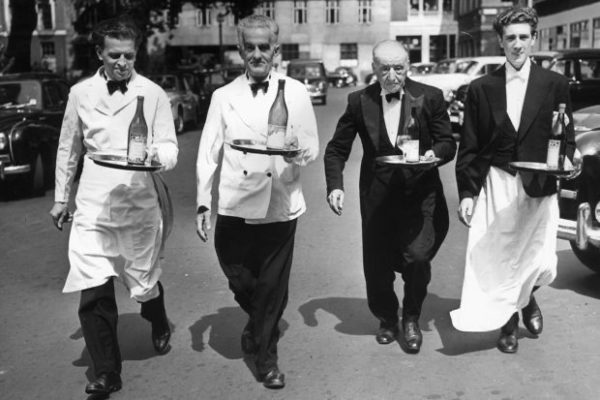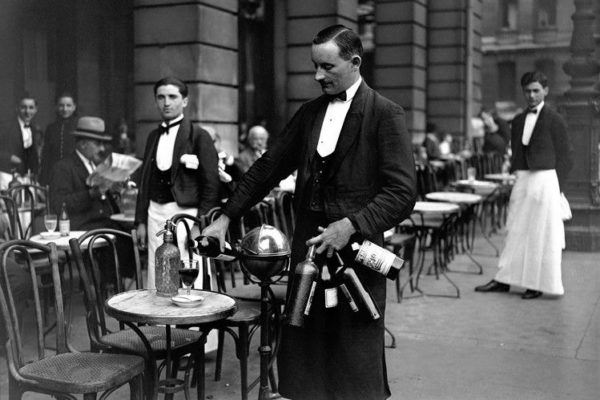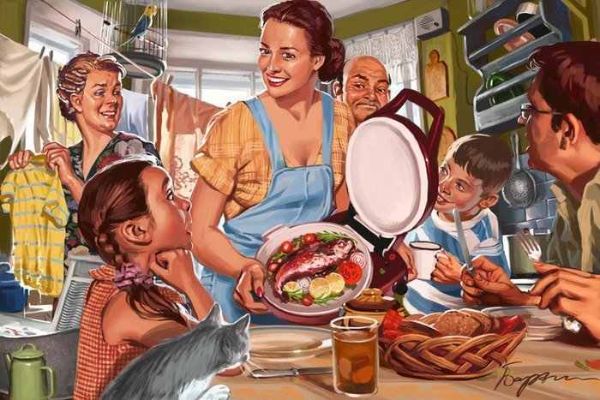Even the greatest athletes inevitably face their own mortality, their impermanence in the history of sport. Some players make the difficult decision to retire at the peak of their game, like Michael Jordan did after his last championship in 1998. (As a native Chicagoan, I refuse to acknowledge his brief, unsuccessful cameo years later with the Washington Wizards.) Other players stubbornly slog it out until their athletic abilities erode to the point where they aren’t competitive anymore. Retirement makes the decision for them.
Restaurant careers follow a similar trajectory to an athlete’s. We start working in the industry at a very young age, we get caught up in the allure of instant gratification and then we get out of the game when our minds and bodies can’t take any more punishment. For every hospitality zealot who believes in the transformative power of restaurant service there are hundreds, if not thousands, of others like me who enjoy restaurant work but wish there was an easier way to make ends meet. Our feet hurt. Our income stagnates seasonally. We just can’t deal with these fucking people anymore. But most of us show up day after day and keep doing it because we have more bills due than available egress exits.
Lately, I’ve been trying to envision what the restaurant world will look like after the Coronavirus pandemic has abated. My background as a server makes me particularly sensitive to how this crisis threatens the livelihoods of front-of-house workers who, like me, are accustomed to generating our income from tips. Serving jobs can be very lucrative, but since income is typically based on a percentage of sales the restaurant needs to remain busy to keep the cash flowing. If restaurants aren’t busy in the near term because guests are reticent about dining in public spaces, tipped workers are doomed to face serious financial shortfall.
Though I acknowledge its shortcomings, the tipping system has endured in part because FOH workers don’t trust restaurant owners to pay them their worth. When I worked in Hong Kong, it was horrifying how easily owners could misappropriate funds from service charges that were automatically added to every check without transparency. Only a fraction of those service charges ended up in the staff’s pockets.
In the U.S., there’s been a growing resentment toward servers for their escalating salaries, some arguing that it comes at the expense of the kitchen staff. Managers—who have more responsibility but whose salaries often lag the tip pool—harbor animosity as well. I don’t think I’ve worked a single restaurant job where I haven’t been reminded regularly that I make too much money.

But how can we realistically expect restaurant owners to pay FOH properly when they routinely underpay their cooks? Of course, many owners will cry poverty and lament rising costs or narrowing profit margins. But it’s become accepted that many of the most successful chefs and owners pay their kitchen staff below industry standards, openly exploiting the fact that young chefs will work for less money to build their resumes. Shouldn’t the busiest restaurants pay the most to their BOH staff? They should, but they don’t.
Assuming the Coronavirus pandemic doesn’t kill tipping, the deficit in sales going forward might. It’s simple math. You can’t make money if you don’t have tables. Not only that, if restaurant owners are only legally able to fill their dining rooms at 50% capacity, then revenues will also likely be halved, and half the staff will remain furloughed. These are generous estimates. Sales cut in half mean tips cut in half. Many servers will prefer to continue to collect unemployment rather than returning to a restaurant that’s breathing on one lung.
Assuming nothing changes in the law between now and reopening, most FOH staff still costs owners less than a minimum wage per hour. Most states have “tip credits” that apply to certain workers—some as low as $2.13 per hour—who rely on tips for the majority of their income. Some government officials have even threatened to rescind unemployment benefits for workers that refuse to report back to their jobs, as the Governor of Iowa did recently. If the same officials mandate limits on seating capacity in restaurants, they’re forcing tipped workers to walk the plank.
As dining culture has become increasingly commoditized, restaurants have become whorehouses for capitalism. Tipped workers live off the crumbs left by the affluent diners who recklessly squander obscene amounts of money on extravagant meals. Our jobs have become increasingly geared toward enabling that recklessness. Servers and bartenders scramble for jobs in the busiest restaurants possible. If you’re lucky enough to find one of these jobs, the upper-echelon can earn six-figure salaries. I’ve been fortunate to be employed in such jobs during my career, and it’s made putting aside the years of psychological and physical wear a lot easier.
I guess you could say I’ve been part of the 1% of waitstaff, but I’ve worked hard to get to this level. Restaurants have become so much more important than they once were, and pay should be commensurate. For people like me who’ve dedicated ourselves to the craft of table service, a future of restaurants with fewer tables or fewer guests would be apocalyptic. This situation is more lethal than past crises like 9/11 or economic downturns like The Great Recession. We’ve been stepping around these piles of horse manure for a long time. Now we’re standing knee deep in it.
Some have suggested this would be an opportune moment for restaurateurs to introduce more hospitality-included models. Decoupling servers pay from aggregate sales could help retain more FOH staff who might be tempted to leave if business levels remain depressed. It’s hard to find a formula that works for everyone, especially when the economy is so unpredictable. The reason that many hospitality-included models have collapsed in the past is because the salaries assigned to FOH at many of these restaurants have not been able to compete with restaurants that have tipping models. The market dictates where the talent goes. Perhaps there will be less discrepancy in a post-COVID world and these models can become more viable?

It’s important to remember that thousands of people who otherwise would’ve fled the industry through the years have stayed in the workforce because it affords them an opportunity to earn competitive wages. The fact that these FOH jobs have historically paid so well fortifies the talent pool. But the industry cannot continue to attract talent without maintaining attractive salaries for these jobs. It’s basic supply and demand. Exodus of talent from FOH ranks—especially in fine dining where most of the “white-collar” restaurant jobs are—will be a significant aftershock if business doesn’t recover to pre-COVID levels. The golden age of restaurant tipping may have come to an unceremonious end.
It may be premature to call this my Jerry McGuire moment. It’s impossible to predict the circumstances around my being asked to return to work, but the odds of restaurant life returning to normal anytime soon are slim to none. Every restaurant worker has always understood how expendable they are. We’re treated like mercenaries, and, to be honest, most of us embrace it. If we get fired, so what? We just move on to the next place.
Having fewer people to serve, however, is uncharted territory. This existential threat will undoubtedly stifle growth in the coming months but, as it always is, the restaurant industry will be resilient. The question then becomes: How long can people like me who’ve ridden the ship for so long hold onto the hull while it takes in water?
As the industry has grown—and I say this from personal experience—it’s become more than a temporary job or a supplemental income for many of us. Hospitality has become a legitimate career. But there’s a serious risk that this crisis delegitimizes our industry and undercuts the progress we’ve made. One virus may have taken all of that away, and it might take me with it.




